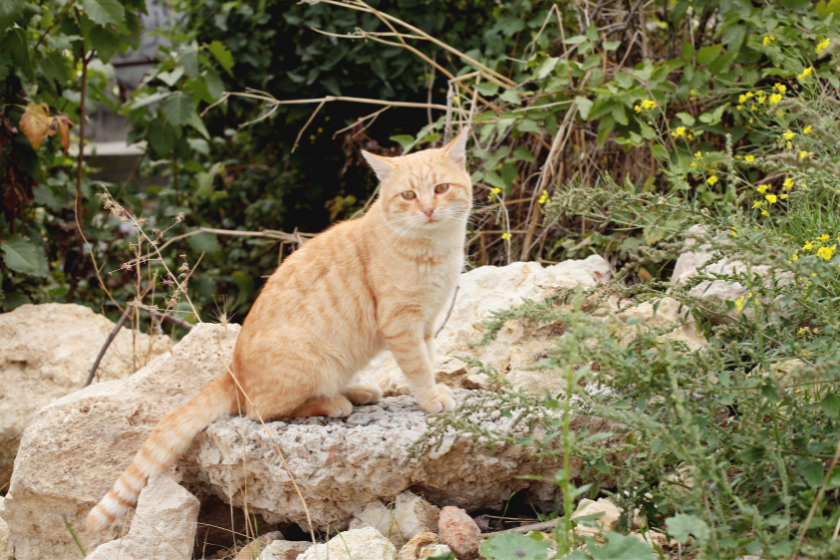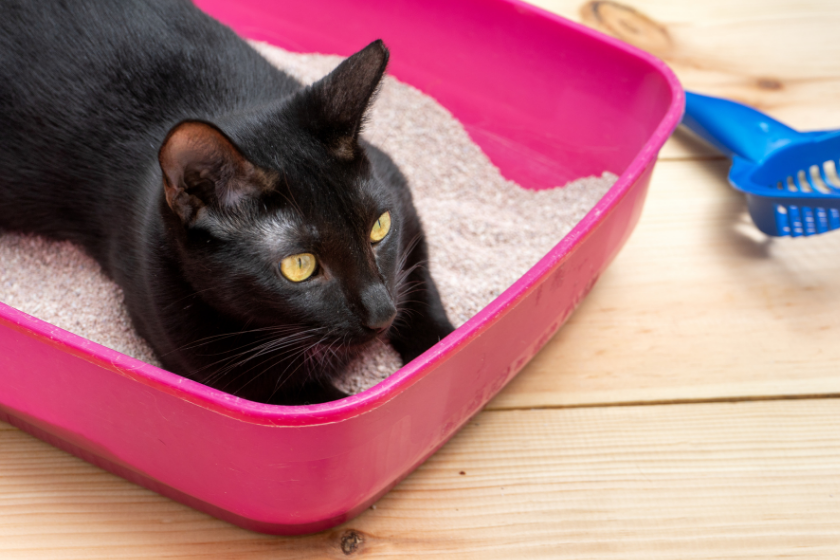Want to have an indoor/outdoor cat but are concerned that they won't come back? Training cats to go outside may not be as hard as you think.
Many pet parents believe that cats cannot be trained and only do what they want. Indoor cats learn where they are and are not welcome. So why can't you train a cat to go outside? The good news is you can! Cats can learn a routine just like dogs do, though admittedly, they do it at their own pace. Before you let your cat outside, here are some tips for setting your cat up for a successful indoor/outdoor lifestyle and ensuring you get back inside after a day of adventuring.
What To Do Before Your Cat's First Outdoor Adventure

Cat owners are understandably hesitant to let their cats outside for the first time. However, cat parents can take steps to keep their cats healthy and safe while they are out roaming the neighborhood. Before you start outside training, make sure your kitten is old enough to be outside on their own. Small kittens can be picked off easily by predators, especially if they are not being supervised. Here are a few other things to do to keep your pet safe:
- Ensure their vaccinations are up to date
- Get them a microchip
- ?Have them wear a collar and a tag
- Install a pet door
- Keep up to date on flea and tick medication
Proper cat care is important whether they are indoors all the time or split their time between the backyard and the living room. But cats can pick up a lot more bugs and parasites when they are outdoors, making it imperative that they are up to date on their flea and tick medications and vaccinations — Also consider getting a reliable cat flea collar when temperatures begin warming in the spring.
Training Cats to Come Back Inside

RELATED: Do Cats Like Snow? How Furry Felines Assess Winter Conditions
Cats enjoy spending time in the fresh air outside as much as people do. The Humane Society of Huron Valley recommends starting slowly with your cat. Make sure they are familiar with their surroundings, and you, before you let them head outside. When they do go outside, do so for small amounts of time, at first. Then, give them a treat and plenty of love when they come inside so they know it was a positive experience.
Personally, my cats have always been indoor/ outdoor, and they frankly prefer it that way. If I try to keep Bandit inside for too many days in a row, she turns into quite the cranky cat, and when she was younger, she would display her frustration by disappearing for a day or two. Now that she is older, she has learned that she stays inside when the weather is too cold or wet to have a safe adventure. Granted, that does not stop her from whining about it.
I got my first cat when I was a teenager, and I was so scared to let Kaci go outside. However, when she and her sister, Piper, were old enough, we would let them go outside for short periods, with us watching. At first, we would let them play on the lawn while we sat there with them. As they grew, they spent more and more time outside, eventually venturing out on their own as soon as the door was opened. When we wanted them to come back in, we would call for them to come back home. When the girls came back in, we would praise them for returning. They would get to come inside for some treats and would usually play on their cat tree before curling up for a nap. Eventually, they would come in simultaneously every day without us calling for them. Kaci and Piper were ready for mealtime and a nap. They, much like Bandit, also learned that they did not like being outside when the weather started to turn. If the day started sunny and became windy, two little furry faces would pop up in the window, meowing to come inside pronto.
Training Bandit on the routine was a similar experience to training Kaci and her sister. Bandit goes outside first thing in the morning and comes back in the afternoon. During the summer, she stays out longer and likes to be out until dark. Conversely, during the winter, it's a little too cold for that, and her outside time is only from mid-morning to mid-afternoon. She often curls up on the chair cushions on the porch to stretch her time out a little longer.
When I worked outside the home, Bandit would show up when I pulled into the driveway around 5:30 and followed me into the house. Now that I work from home, Bandit prefers to jump on the door handle and meow outside the cat door that she refuses to use. However, since that is the back door, we don't always hear her, so she has learned to come to the side door when she is done adventuring for the day, and she gets let in immediately by myself or the kids.
Cats learn new routines fairly quickly and adjust as things change around the house. Avoid feeding your cat outside. Food will attract wild animals and will not give your cat much of an incentive to come inside.
Does My Cat Need a Litterbox Outside?

While cats rely on fancy self-cleaning litter boxes when they are inside the house, they are not opposed to going to the bathroom outside. Most pet owners litter train their new cat immediately, but that will not stop your cat from finding a nice pile of sand, dirt, or other cat-friendly areas when they need to use the facilities. Some cats will return inside through the cat door when they need to use the litter box, but most will go outside, which is good news for you. More time outside means less scooping cat litter!
However, if you prefer for your cat to not go in your garden or your child's play sand, you may want to provide a litterbox for them to use while they play outdoors.
Alternative Outdoor Access

If you want to give your cat some outside time but want to keep your cat safe, there are some alternatives to letting them roam freely. For example, building a safe catio in your backyard or on your porch with a cat door for access can give your feline friend some time in the sun, without the possibility of getting hit by a car or eaten by a larger animal. There are catio kits available for purchase, or if you are handy, you can DIY one. Leash training is another viable option, especially if you have a younger cat. Use a cat harness and train your cat to walk on a leash, giving them the best of both worlds.
Did you train your cat to go outside? Tell us on our Wide Open Pets Facebook page.




